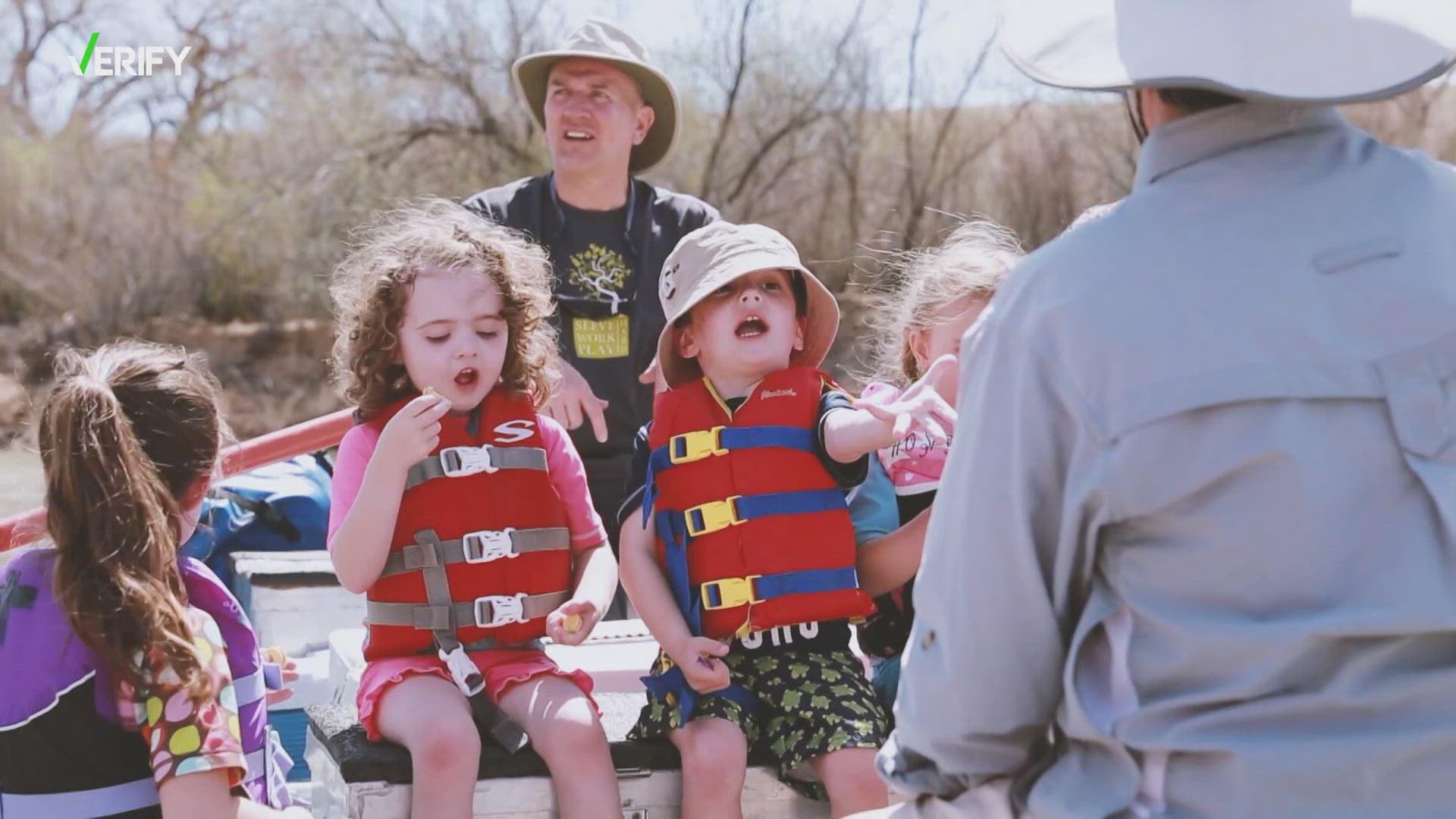HOUSTON — The Centers for Disease Control (CDC) recommends kids use U.S. Coast Guard-approved life jackets to reduce the risk of drowning. Life jackets can be used for a variety of activities ranging from the swimming pool to deep sea use, but do not have to be U.S. Coast Guard (USCG) approved to be sold. However, there are instances where federal and state law requires a USCG-approved life jacket as the only acceptable device.
Life jackets, also known as personal floatation devices (PFDs), come in several different performance types ranging from one through five. Manufacturers looking for USCG approval for their devices turn to scientific testing laboratories like UL Solutions. The KHOU 11 Verify Team asked one of the scientists involved with testing life jackets to clear up the confusion on finding the right life jacket for children to stay safe in the water.
THE QUESTION
How do you know what life jacket to wear?
THE SOURCES
American Red Cross
National Drowning Prevention Alliance
National Park Service
Texas Parks and Wildlife
UL Solutions
U.S. Coast Guard
WHAT WE FOUND
People often associate life jackets with being out on open water, or on a boat. But the Centers for Disease Control (CDC) says a life jacket will also prevent a child from drowning in settings like a swimming pool. The KHOU 11 Verify Team learned from UL Solutions, a scientific testing company, what to look out for when purchasing a life jacket for a child.
According to the U.S. Coast Guard, the agency does not, "review PFD (personal floatation device) design, construction, or performance; however, we will conduct a pre-approval review of any new or novel PFD. before submission to the recognized laboratory."
UL Solutions tells the KHOU 11 Verify Team, that they are contacted by manufacturers looking to receive U.S. Coast Guard approval for their life jackets.
"We do test to specific standards," said Kacie Boyce, an engineering associate at UL Solutions, "So they are, agreed upon with the Coast Guard."
'We're technically a third-party testing facility that assists these manufacturers in getting their Coast Guard approval,' she continued. "So if they pass our UL safety standards and they can achieve in most cases, their U.S. Coast Guard approval number, which is required by law, on your boat."
UL Solutions tests the reliability of the personal floatation devices, from the parameters of the manufacturer.
"They (manufacturers) cannot veer outside of what we approve," Boyce said.
Once USCG approves the device, the approval stamp on a jacket will contain all of the information on what the device is designed to do, along with identifying information including the USCG approval number. That is how buyers will be able to tell if they are getting a vest that is approved by the U.S. Coast Guard.
In the U.S. there are five different performance types of vests.
"All infant devices are turning devices," Boyce said. "So they are designed to turn the wearer from an unconscious state, from a face-down position to a face-up position. So that is a type two device."
Type two devices are recommended for near-shore or calm water use. The jacket is often not designed for the wearer to be in the water for long hours.
Click here to learn the different types of devices.
Boyce recommends selecting a life jacket based on the activity and swimming capability. For the parents using popular swimming aids called puddle jumpers,
"I wouldn't necessarily recommend that for on a boat or for a swimmer who is not very good at swimming," Boyce said.
Despite the wide range of options for floatation devices, the key factors that come up in the testing at UL Solutions are the sizing and fit of the life jacket.
Children's life jackets are different from adults.
"Infant, child, and even youth devices will be labeled based on weight," Boyce said.
Among the tests done by UL Solutions is the weight range, so if a parent is off slightly in their child's weight by a couple of pounds the vest is expected to perform its purpose.
The U.S. Coast Guard says the best practice to ensure a life jacket fits a child is to test it out before a day out on the water. One way to ensure the life jacket works for your child is to make sure it fits snugly and pull up on the shoulders when the child is wearing the jacket to make sure the device won't slip off.
Boyce says in her experience, "...it does happen where it feels really snug on land, and then you get in the pool and suddenly it's written up a little bit and it's uncomfortable, or you can't move as well."
She recommends in those cases to continue trying to find the right product until you find the right fit.

